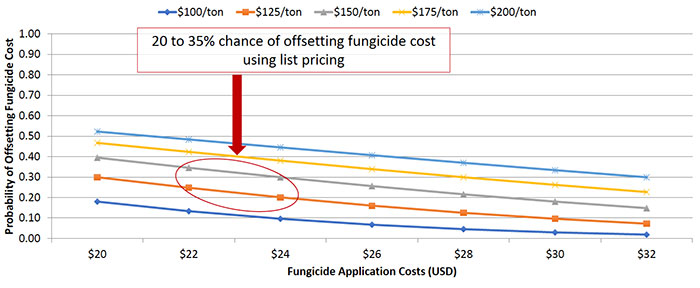Overall, the use of a foliar fungicide with a fairly aggressive alfalfa cutting interval (less than 30 days) has offered a low probability of return in Smith’s research trials.
Longer cutting intervalsSome alfalfa producers might have reasons for extending the cutting interval. For example, a beef producer might be less concerned about forage quality than yield. Also, a potential strategy with reduced-lignin alfalfa is to delay harvest five to 10 days and still harvest at the same quality as the shorter cutting interval.
Smith has initiated several trials since 2015 comparing cutting intervals from 30 up to 40 days, using both a HarvXtra and conventional Roundup Ready variety.
The initial results have showed no differential response between the two varieties; both tend to respond similarly to the fungicide treatments. Smith noted that they have typically seen significantly more leaf disease and defoliation present at 40 days than what was being found at 30 days.
Similar to previous work, Smith has found no yield or quality advantage to fungicide treatments for the 30-day cutting interval. However, at 40 days, there were more instances where fungicide treatments have resulted in significant gains in yield and/or forage quality compared to the untreated check plots.
Smith summarized by saying that short duration cutting intervals of 30 or fewer days generally do not warrant a fungicide treatment. Longer duration cutting intervals, beyond 35 days, will result in a higher likelihood of a positive return on investment, especially with higher hay prices and economical application costs.


